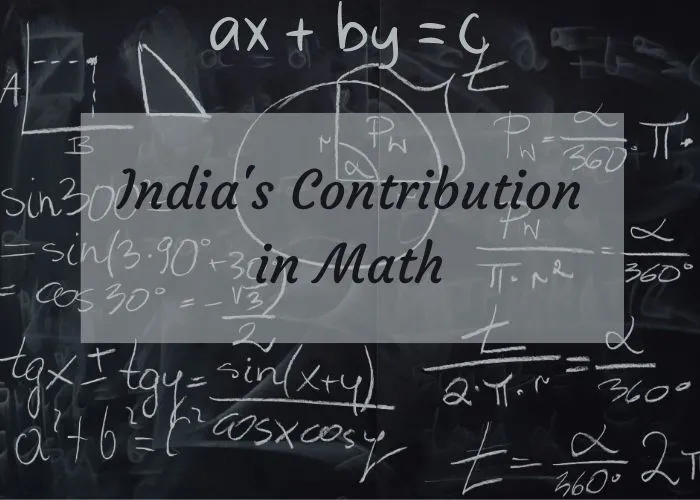If we think about India’s contribution in the field of mathematics the first thing that comes to mind is zero (0). But what if I tell you that the number 0 is only one of many contributions of India to the world.
India has given a lot more than 0 to the world however no one would deny that zero is the biggest contribution of India to the world.
Many would say that the zero enabled ancient Indians to study higher mathematics.
In this article you will know about the contribution of India in the field of math.
Contribution in Decimal System
Many would not know that the decimal system in use today was first used in Indian Mathematics.
Vedas written back in 1200 BC contain mathematical knowledge. In these texts, numbers were commonly expressed as the combinations of power of ten. It is reasonable to believe that this representation using powers of ten played a crucial role in the development of the decimal-place value system in India.
In the third century BC, the Brahmi numerals which is the predecessor of the modern Hindu-Arabic numeral system that most of the world uses today.
Contribution in Negative Numbers
Negative Numbers were also first demonstrated in India. Indian mathematician Brahmagupta demonstrated the rules of negative numbers referring to positive numbers as fortunes and negative numbers as debts.
His statement translated as “A fortune subtracted from zero is a debt,” and “a debt subtracted from zero is a fortune”. This statement is the rule which is taught in the school that if you subtract a negative number, it is the same as adding a positive number.
Brahmagupta also knew that “The product of a debt and a fortune is a debt” – a positive number multiplied by a negative is a negative.
Contribution in Basis of Calculus
People generally believe that calculus was discovered independently in the late 17th century by two great mathematicians: Isaac Newton and Gottfried Leibniz.
However there is evidence which proves Indian mathematician Bhāskara had already discovered many of Leibniz’s ideas over 500 years earlier.
Bhāskara, also made major contributions to algebra, arithmetic, geometry and trigonometry. He provided many results, for example on the solutions of certain “Diophantine” equations, that would not be rediscovered in Europe for centuries.
Solution of Quadratic Equations
The father of Quadratic Equations Muhammad ibn Musa al-Khwarizmi was possibly inspired by Brahmagupta an Indian Mathematician.
In the 7th century, the first written evidence of the rules for working with zero were formalized in the Brahmagupta Siddhanta. In his seminal text, the astronomer Brahmagupta introduced rules for solving quadratic equations and for computing square roots.
Brahmagupta gave the first explicit solution of the quadratic equation ax2 + bx = c as follows:-
Trigonometry Advancements
Do you know that the modern definitions of sine and cosine were developed in India. The modern sine convention is first attested in the Surya Siddhanta, and its properties were further documented by the 5th century (AD) Indian mathematician and astronomer Aryabhata.
The Indian works were translated and expanded by medieval Islamic mathematicians.
References From :-




